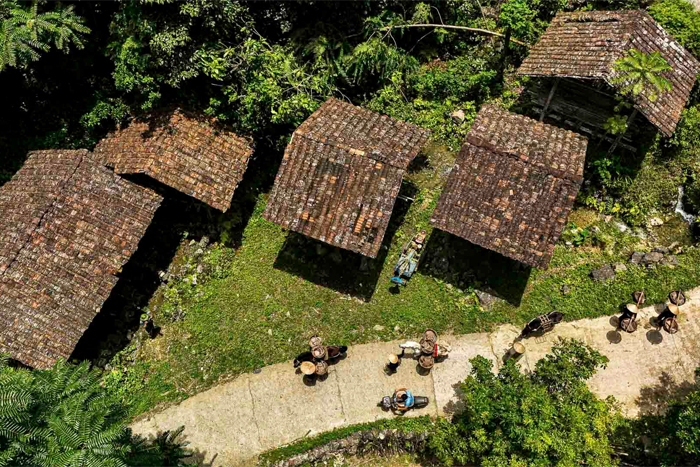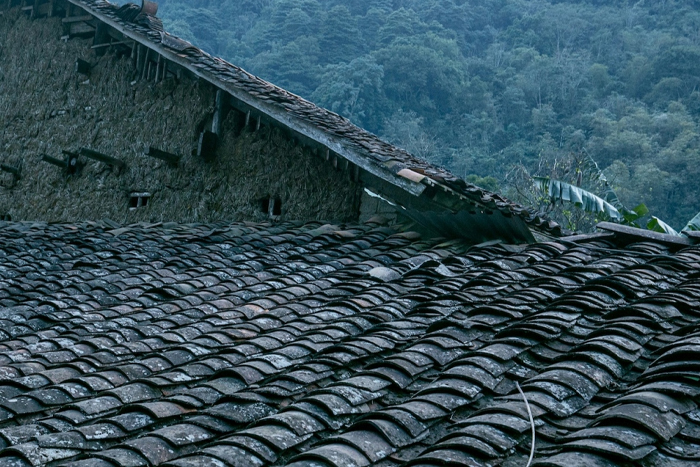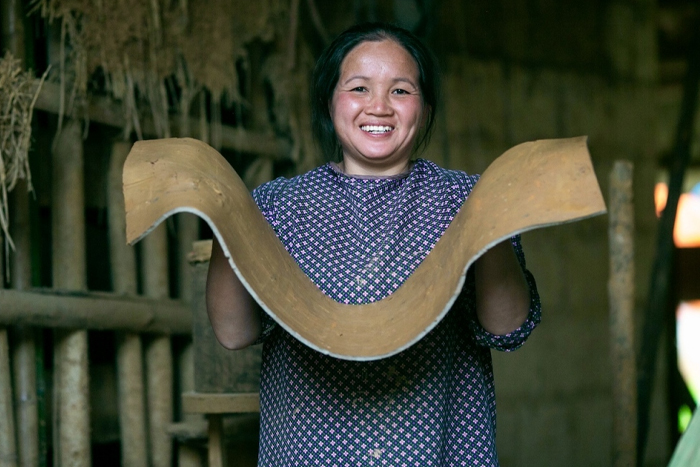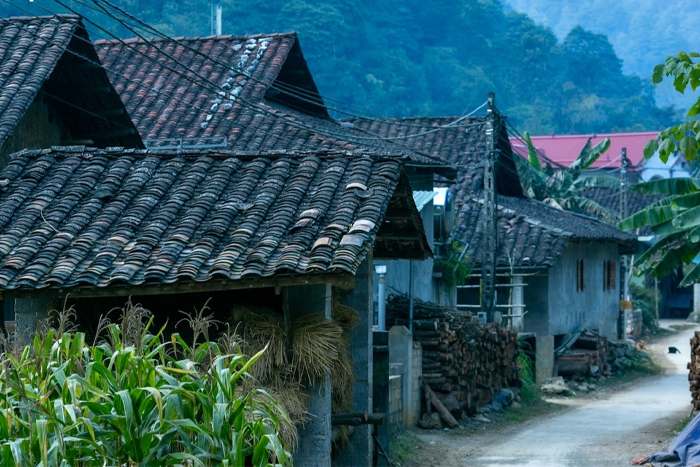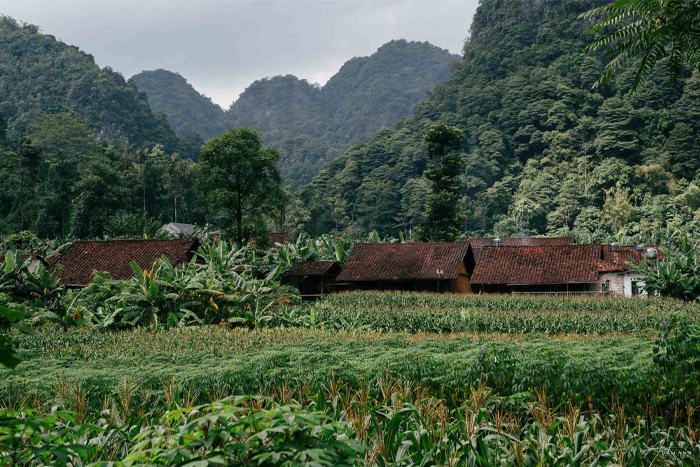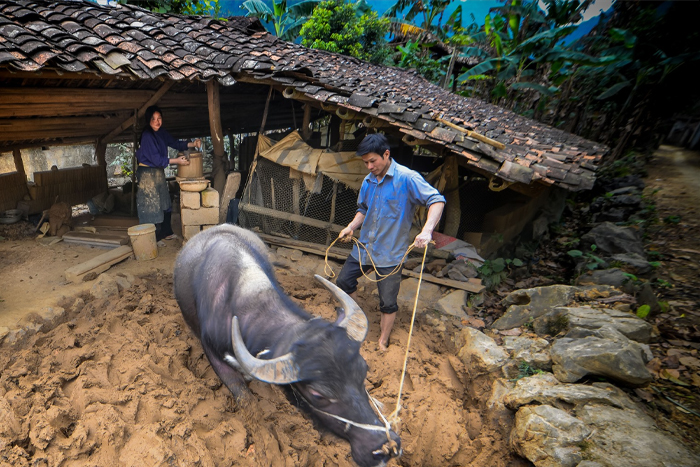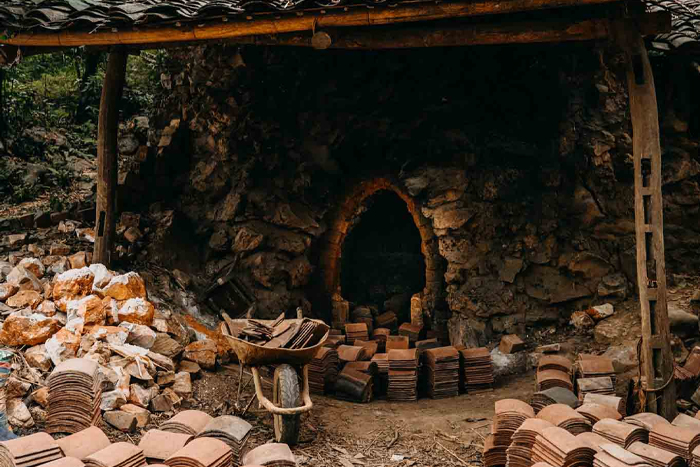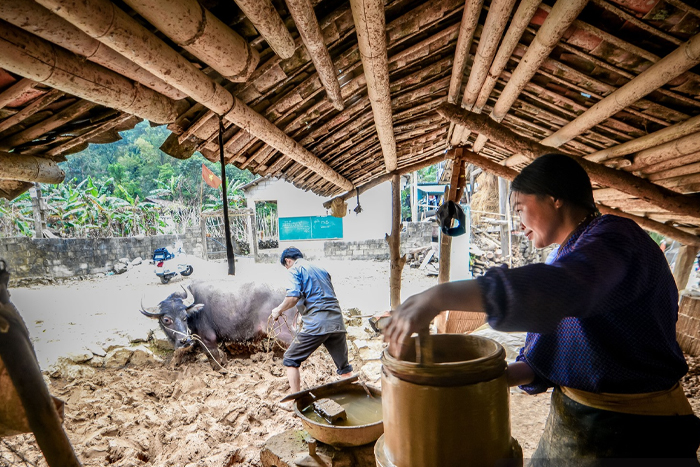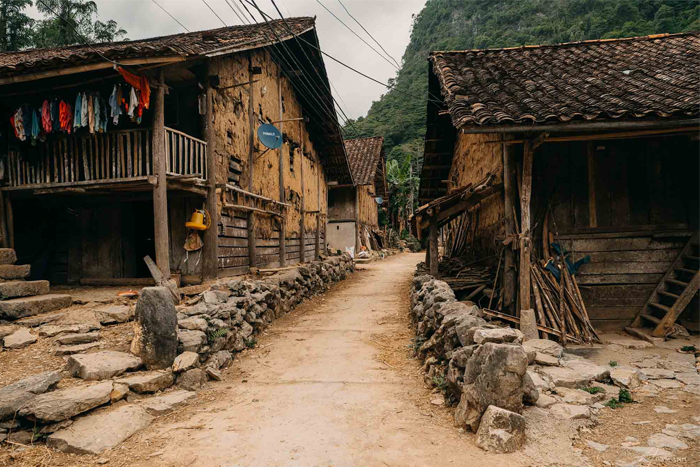Cao Bang, situated a mere 300 km northeast of Hanoi, is a must-visit for travelers. The area is renowned for its breathtaking natural scenery and is also home to traditional craft villages, each with a history that stretches back hundreds of years. Among these artisanal villages, Lung Ri Village is one of those iconic places where craft traditions are alive and well preserved. Discover Lung Ri village: a traditional yin-yang tile making village in Cao Bang Vietnam in this article. With its centuries-old techniques for creating distinctive roof tiles, Lung Ri offers visitors a unique glimpse into Vietnam's architectural heritage and artisanal craftsmanship.
1. Overview of Lung Ri village
Exploring craft villages to learn about culture is one of the distinctive features when traveling to Cao Bang Vietnam. Among them, Lung Ri craft village, with its hundreds of years of history, is waiting for visitors to discover. Lung Ri village, also known as “Làng Lũng Rì” or “làng nghề làm ngói âm dương” in Vietnamese, is located in Tu Do commune, Quang Hoa district, about 30 km from the center of Cao Bang City. This village, nestled on a mountainside, is famous for its centuries-old tradition of making yin-yang tiles by the Nung An people.
The name “yin-yang tiles” from Lung Ri craft village piques the curiosity of many. The reason for this intriguing name lies in the fact that these tiles always come in pairs, consisting of two complementary pieces. One tile, called the 'trough tile' (ngói máng), represents the 'yin' and is laid with its concave side facing up. The other, known as the 'crawling tile' (ngói bò), embodies the 'yang' and is placed with its convex side facing down.
2. Why visit Lung Ri village?
Lung Ri craft village is a name that resonates with those who seek to explore the traditional beauty of Cao Bang Vietnam. For generations, this village has been renowned for its production of yin-yang tiles, also known as trough tiles (ngói máng), crafted using time-honored techniques passed down through the ages. Perched on a high mountainside, Lung Ri is predominantly inhabited by the Nung An people, whose cultural heritage is deeply woven into the fabric of the village.
As soon as visitors enter Lung Ri village, they are struck by its timeless atmosphere. Every alley and house shows the marks of history, creating an antique feel throughout the settlement. The landscape beautifully blends human life and nature, with houses featuring unique yin-yang tiled roofs set against a backdrop of trees, terraced fields, and green hills. This integration of traditional architecture and stunning scenery showcases the lasting bond between the villagers and their mountainous home.
Today, the villagers still maintain their traditional craft, although it faces the risk of decline. Looking back at the golden age of the tile-making village, which was around 1979 - 2000, the entire commune had up to 150 households engaged in tile-making. This was also the main occupation providing income for the local people in Lung Ri village.
3. Discover the art of Yin-Yang tile making
In recent years, the ancient art of yin-yang tile-making in Lung Ri village has encountered formidable challenges. The rise of modern roofing materials and the increasing scarcity of traditional raw resources have put this time-honored craft at risk. However, the spirit of Lung Ri's artisans remains unbroken. The local people here still strive to maintain their profession, preserving their traditional craft village.
The traditional process of creating yin-yang tiles involves numerous meticulous steps. It begins with carefully selecting and preparing clay from Doc Lap commune, which is kneaded and sieved over several days to remove impurities. Skilled artisans then shape the clay into rectangular blocks and place them into circular molds on rotating platforms, creating four tiles at once.
After molding, the tiles are sun-dried on rice husk-covered ground to prevent sticking. The final stage involves firing the tiles in kilns for about a week, with craftsmen constantly monitoring the temperature to ensure quality. Each firing produces up to 18,000 tiles.
This meticulous process results in high-quality, handcrafted tiles known for their beautiful colors and excellent insulating properties. The yin-yang tiles effectively keep houses cool in summer and warm in winter, showcasing the enduring value of this traditional craft in modern times. Lung Ri's dedication to this art form highlights the village's rich cultural heritage and the practical benefits of time-honored techniques.
When visiting Lung Ri craft village, tourists will encounter the sight of villagers diligently working day and night to create the interlocking yin-yang tiles. You can engage in conversation and listen to the heartfelt stories of the people devoted to this craft, gaining a deeper understanding and appreciation for these traditional values.
4. All travel guides for your visit to Lung Ri village?
a. How to get to Lung Ri village?
Lung Ri tile craft village is located more than 280 km from the center of Hanoi, taking about 6 hours to reach. Travelers can follow the Hanoi – Bac Giang – Lang Son expressway, then onto National Highway 1A => National Highway 4A => National Highway 3 to reach Lũng Rì Village. The route is long with many sharp bends, requiring confident driving skills.
Lung Ri village is about 40 km from Cao Bang city. You can take a bus to the city with ticket prices from 200,000 to 300,000 VND per person, then rent a motorbike (150,000 to 200,000 VND per person) to continue your journey.
From Cao Bang City, follow National highway 3, and at the junction, ask for directions to Lung Ri village. Generally, tourist spots in Cao Bang are quite far apart, with many dangerous mountain roads. If you are not confident in your driving skills, you can hire a motorbike taxi, regular taxi, or a local guide.
b. Some useful travel tips

Here are some useful travel tips when visiting Lung Ri village:
Dress comfortably: Wear comfortable clothing and sturdy shoes, as you'll likely be walking on uneven paths and exploring the village.
Respect local customs: Be mindful of local customs and traditions. Dress modestly and be respectful when interacting with villagers.
Pack essentials: Bring essentials like sunscreen, a hat, insect repellent, and a reusable water bottle to stay hydrated.
Hire a local guide: Consider hiring a local guide to get a deeper understanding of the village's history, culture, and the yin-yang tile craftsmanship.
Support local crafts: Purchase handmade crafts and products from the villagers to support their economy and take home unique souvenirs.
Plan for weather: Check the weather forecast before your visit and pack accordingly. The region can experience sudden weather changes.
Visiting
Lung Ri village is more than just observing a traditional craft; it's an opportunity to become part of the ongoing story of cultural preservation, if only for a moment. The warm welcome of the villagers and their willingness to share their knowledge make this an unforgettable and enriching experience for all who visit.
We hope the above information is helpful and assists you in having an enjoyable and authentic experience in
Cao Bang Vietnam. We believe you will have a wonderful journey and many memorable experiences. For a satisfying experience that exceeds your expectations, please CONTACT ATOUR ASIA,
Best Vietnam Travel Agency now.

